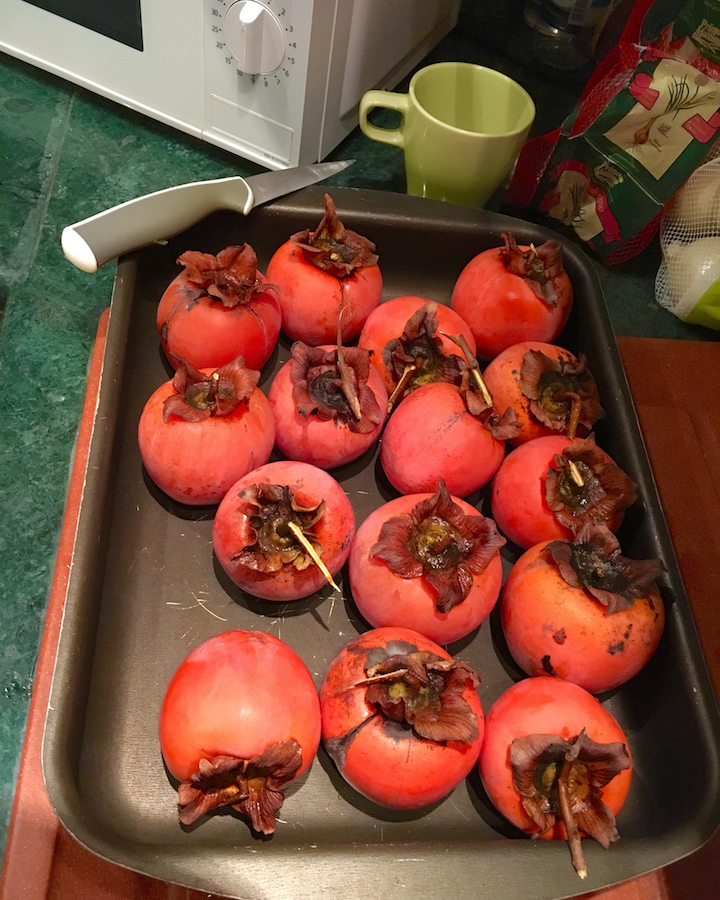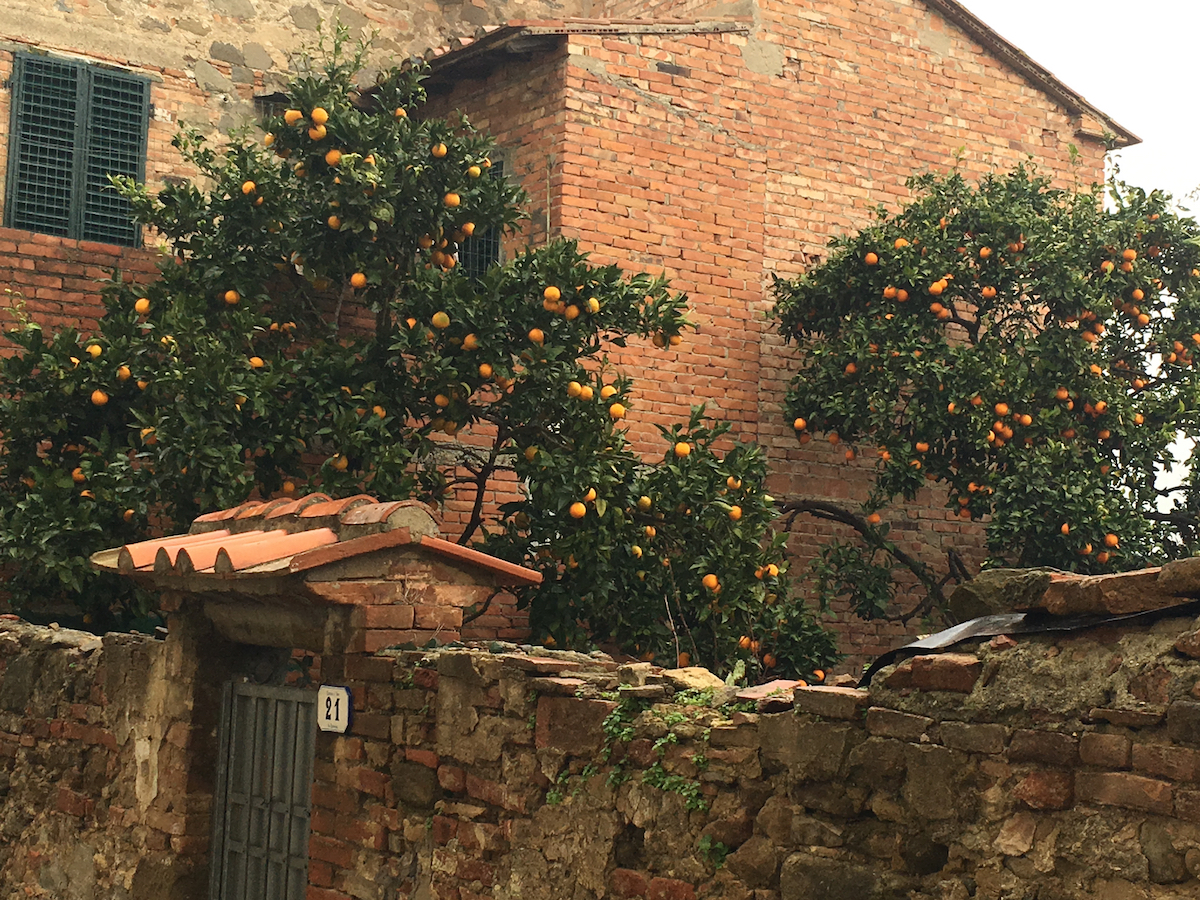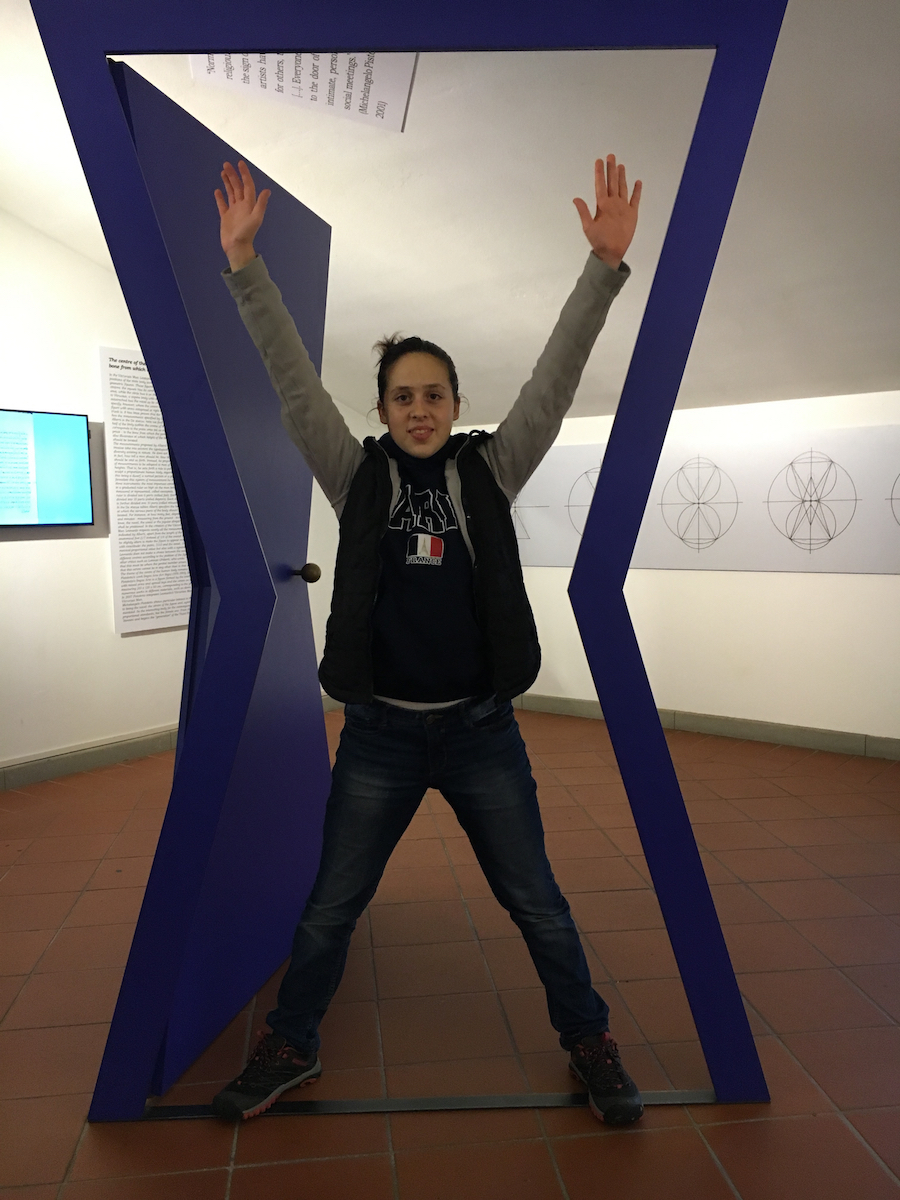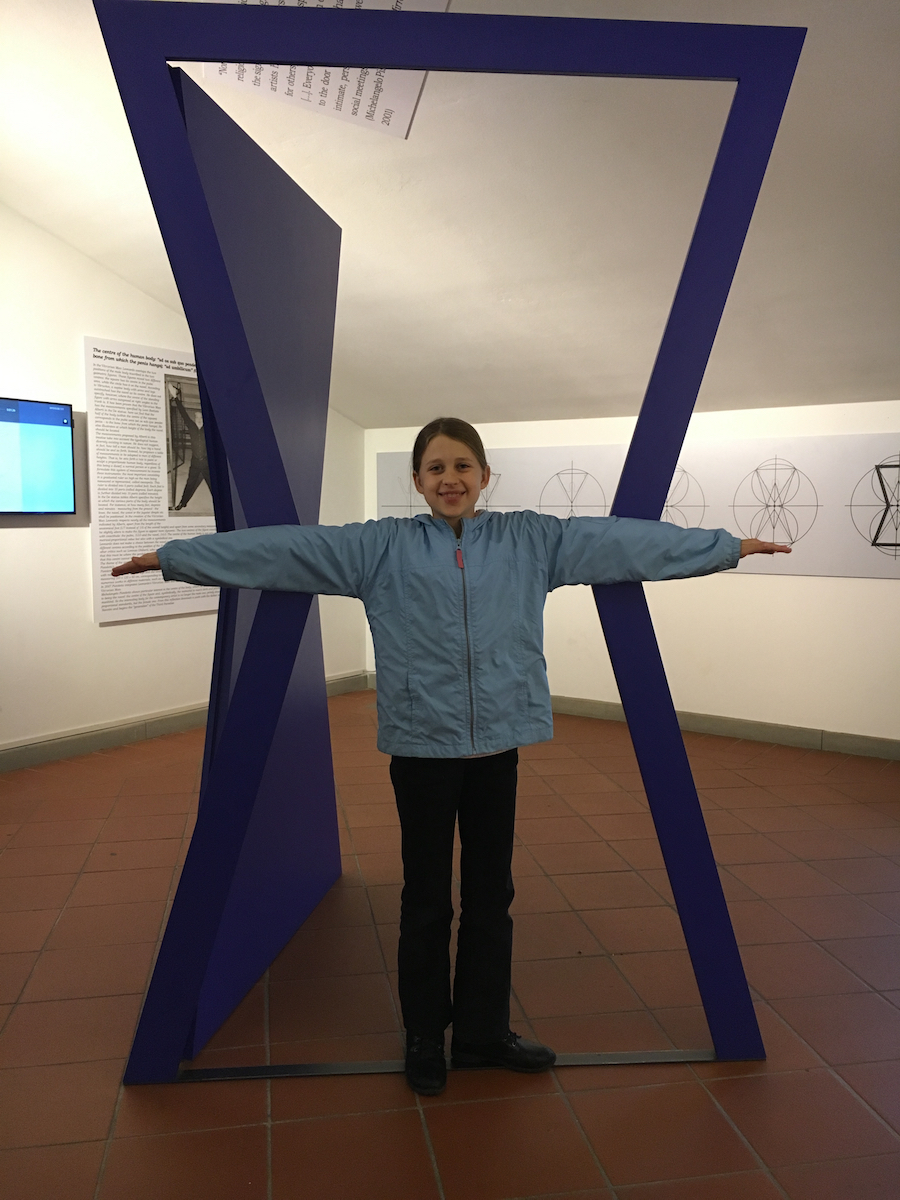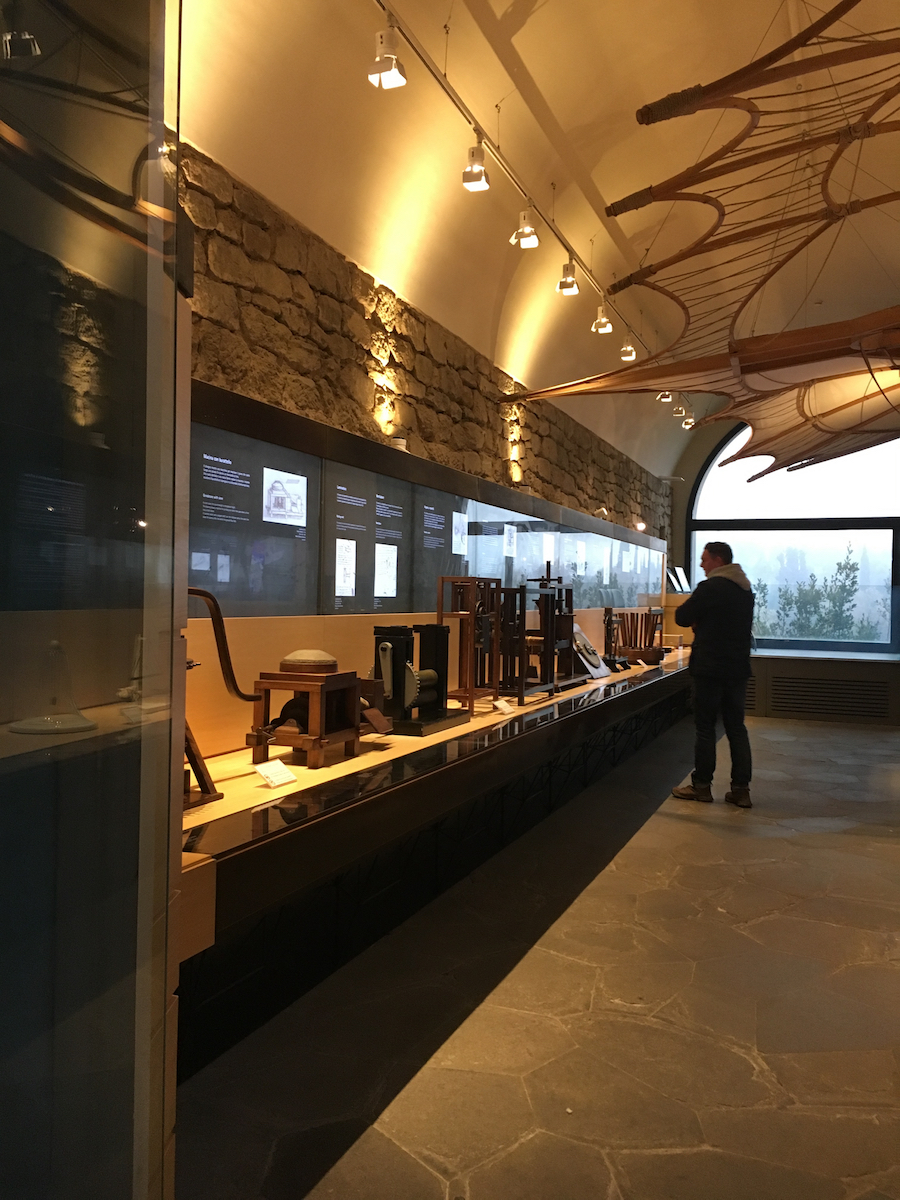Day 100
Vinci Museum day! After breakfast I went out and picked a pan full of Persimmons for Mom. She then took a picture of them and started eating the ones that were ripe. All morning we did school and read books, and Mom looked up places to go in the afternoon. When we had finished lunch and Mom had found the Vinci museum to go to, we headed out.
The drive to the town of Vinci was a curvy, hilly road all the way. Olive and orange trees were along the road. When we arrived in the town there were Christmas lights, and people strolling the streets. It was drizzling a little, but the temp was just right. We walked up a path with statues along the way. About half way up we found the first of the two museums.
The first museum, we were not allowed to take pictures. The museum was not that exciting. The contraptions that he invented were amazing. One of the things that he invented was a clock. He liked to experiment with measuring and weight. On the second floor there was an unusual blue door. It was in the shape of 2 triangles points together. Pictures below to show it.
Here is some history of Leonardo da Vinci.
Leonardo da Vinci was born on April 15, 1452, in a farmhouse nestled amid the undulating hills of Tuscany outside the village of Anchiano in present-day Italy. Born out of wedlock to respected Florentine notary Ser Piero and a young peasant woman named Caterina, he was raised by his father and his stepmothers. At the age of five, he moved to his father’s family estate in nearby Vinci, the Tuscan town from which the surname associated with Leonardo derives, and lived with his uncle and grandparents.
Young Leonardo received little formal education beyond basic reading, writing and mathematics instruction, but his artistic talents were evident from an early age. Around the age of 14, da Vinci began a lengthy apprenticeship with the noted artist Andrea del Verrocchio in Florence. He learned a wide breadth of technical skills including metalworking, leather arts, carpentry, drawing, painting and sculpting. His earliest known dated work—a pen-and-ink drawing of a landscape in the Arno valley—was sketched in 1473.
The second museum was more interesting. In the 2nd museum there were lots of cannons and flying contraptions. I am guessing there were 10 different kinds of cannons and 15 different flying contraptions. In the room for flying, there were videos for kids to watch and maybe learn a little of how the machines work and design. On the main floor was a huge weight activated machine.
After The museum we walked back down the hill and on the way down we walked by a little shop that was open. We went in and Bria and I bought little note books. Bria’s was small with olives on vines all over and mine was bigger with roses all over.
On the way home it started to rain and the sky turned gray. At home I, Elizabeth, got the fire going and we all stood around warming ourselves again.


